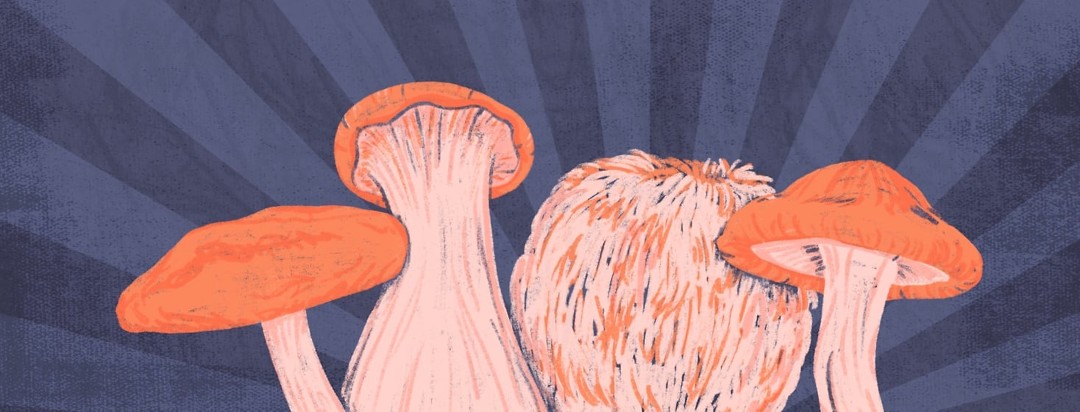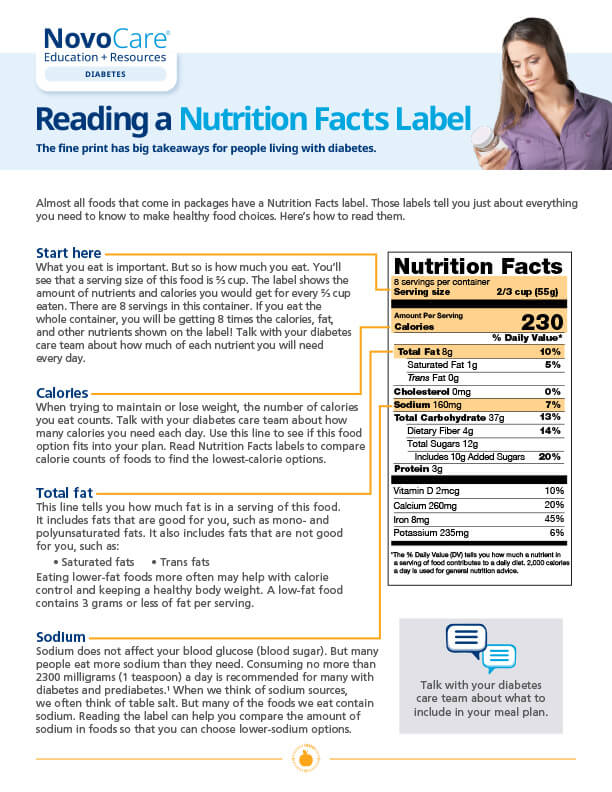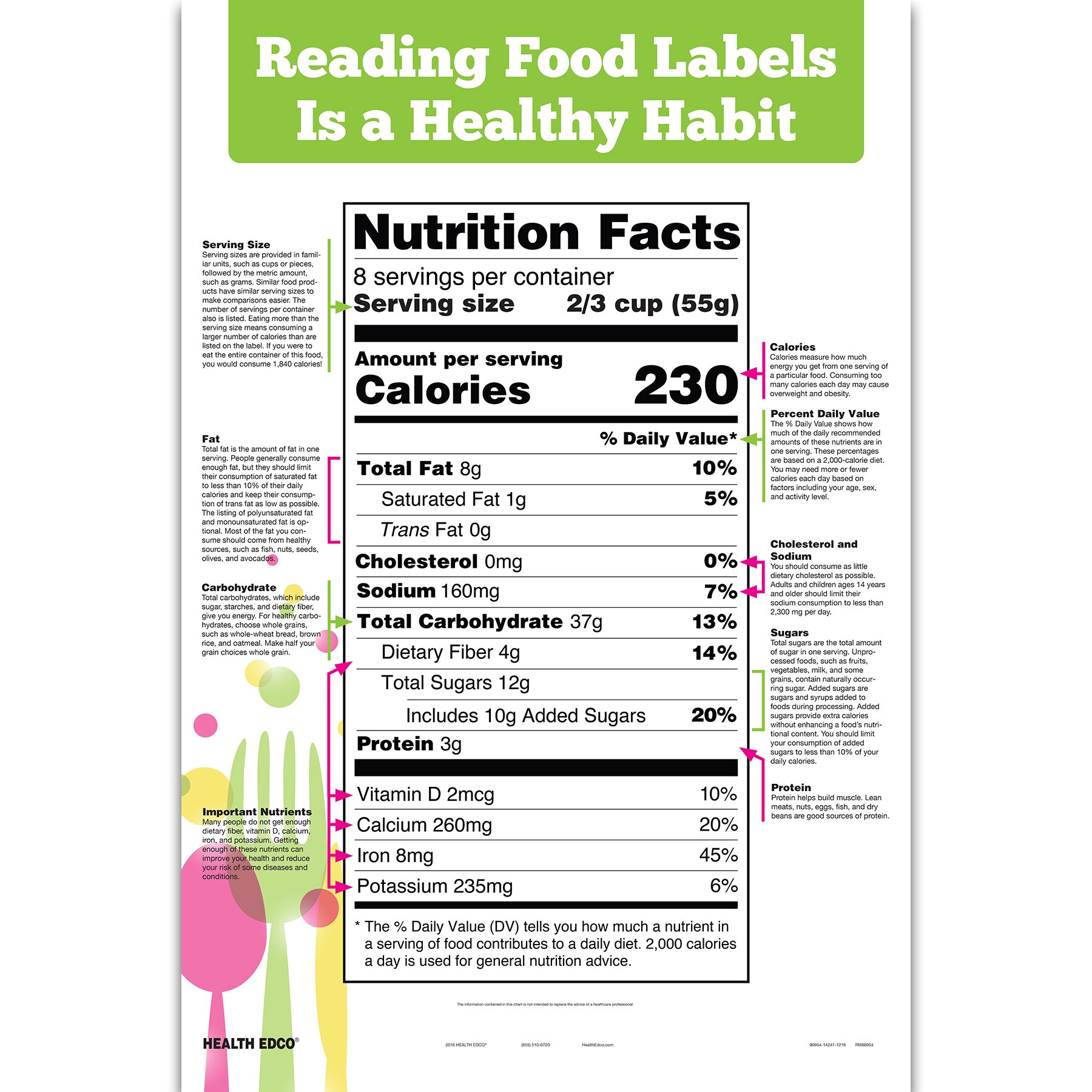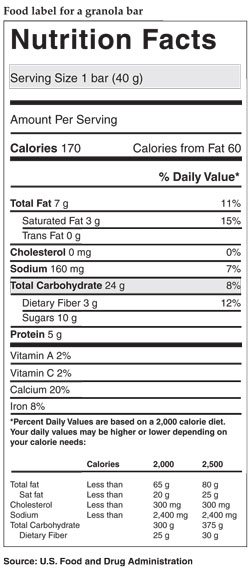39 reading food labels for diabetics australia
PDF how to understand food labels - Eat For Health Not all labels include fibre. Choose breads and cereals with Sodium 3g or more per serve Nutrition Information Servings per package - 16 Serving size - 30g (2/3 cup) Per serve Per 100g Energy 432kJ 1441kJ Protein 2.8g 9.3g Fat Total 0.4g 1.2g Saturated 0.1g 0.3g Carbohydrate Total 18.9g 62.9g Sugars 3.5g 11.8g Fibre 6.4g 21.2g 65mg 215mg PDF What Can I eat? - American Diabetes Association list of everything that is in the food. They are listed by the highest amount to the least. If the first word in the list is sugar, then there is more sugar in the food than anything else. Reading Food Labels Food labels can help you choose what foods to eat. Use the labels at right to find the best choice. 1-800-DIABETES (1-800-342-2383) www ...
Become A Partner | Australia's Healthy Weight Week The Dietitians Association of Australia offers tailored corporate partnerships for Australia's Healthy Weight Week with commensurate recognition, exposure and public brand alignment opportunities. To discuss further, please contact us on +61 2 6163 5200 or by email nationaloffice@daa.asn.au.

Reading food labels for diabetics australia
Labelling poster - how to read food labels This interactive resource explains the food labelling requirements set out in the Food Standards Code and what that information means. Click on the numbers to find out more about food labelling. A useful poster is also available. You can download a copy here (PDF 372KB), or for a printed A2 version please email information@foodstandards.gov.au. Glycemic Index - Diabetes Australia GI numbers are to be used as a guide only as individual foods do not have the same response in all people with diabetes. Low GI foods are foods with a GI less than 55. Intermediate GI foods are foods with a GI between 55 and 70. High GI foods are foods with a GI greater than 70. PDF Learning how to read the nutrition information panel and ingredient ... Guideline for Reading Food Labels. Learning how to read the nutrition information panel and ingredient list on a food label is essential in making healthy food choices. Nutrition Information Pane. l 1. Always look at the per 100g column (this allows for comparison between products) 2. FAT: Look for products with less than 5g of total fat per 100g.
Reading food labels for diabetics australia. Fetch.News The world of independent media, all in one place. Chowhound Thank you for making Chowhound a vibrant and passionate community of food trailblazers for 25 years. We wish you all the best on your future culinary endeavors. Diabetes and carb counting - Diabetes Queensland Most people with type 1 diabetes and some people with type 2 diabetes on insulin use advanced carb counting to work out insulin doses at each meal. It is important to use books, apps and websites that refer to the Australian food database. Your health professionals can guide you with carb counting education and introduce you to useful resources. › books › NBK279012Nutritional Recommendations for Individuals with Diabetes Oct 13, 2019 · The chapter summarizes current information available from a variety of scientifically based guidelines and resources on nutritional recommendations for adult people with diabetes (PWD). It is designed to take these guidelines and provide an overview of practical applications and tips in one place for health care practitioners who treat PWD. The sections are divided into components of ...
A quick guide to reading labels - The Aussie Coeliac When you pick up a product and turn it over to read the information on the back you might even have a small panic attack, I definitely did for a while after I started shopping for myself. Reading and understanding the labels on the back of your food products is the best way to protect yourself from being accidentally glutened. Yikes! Trans fat - Wikipedia Trans fat, also called trans-unsaturated fatty acids, or trans fatty acids, is a type of unsaturated fat that naturally occurs in small amounts in meat and milk fat. It became widely produced as an unintentional byproduct in the industrial processing of vegetable and fish oils in the early 20th century for use in margarine and later also in snack food, packaged baked goods, and for … PDF Label reading basics for diabetes - Veterans Affairs Label Reading Basics for Diabetes Nutrition and Food Services (05/2020) Serving Size • The serving size is the portion size used for all the values on the label. • Different foods have different serving sizes. • The serving size on this label is 2/3 cup. Servings per Container • Indicates the number of PDF Reading food labels - Queensland Health Reading food labels . Understanding how to read food labels can help you make healthy food choices. Food Standards Australia and New Zealand (FSANZ) regulates food labelling in Australia. Most packaged food and drink must have a nutrition information panel. Exceptions include those in very small packages, some baked products and take-away food ...
Never Put These Items Down Your Kitchen Sink May 04, 2022 · One of the most important parts of any kitchen is the sink. It's used for doing dishes, cleaning dirt and germs off of food, and much more. Those with a kitchen sink probably know how easy it is ... How to read food labels | healthdirect In Australia, the law requires all manufactured foods to carry labels containing safety and nutrition information. This information helps you to make decisions about the food you buy and eat so you can follow a healthy diet. The label will tell you: the name of the product, describing accurately what it is the brand name › is-it-safe-to-takeIs it Safe to Take Supplements if You Have Diabetes? Enzymes: There is evidence that type 2 diabetics who have the condition for a long time can also have a condition called Exocrine Pancreatic Insufficiency (EPI) – EPI is a deficiency of pancreatic enzymes like amylase, protease and lipase which help in digestion of food. At least 30% of diabetics suffer from mild to moderate EPI and 19% have ... How To Read Food and Beverage Labels - National Institute on Aging At the top of the Nutrition Facts label, you will find the total number of servings in the container and the food or beverage's serving size. The serving size on the label is based on the amount of food that people may typically eat at one time and is not a recommendation of how much to eat. Read more about serving and portion sizes.
Learning To Read Labels :: Diabetes Education Online When you read food labels, the grams of sugar are already included in the total carbohydrate amount, so you do not need to count this sugar amount separately. The grams of sugar listed include both natural sugars, from fruit or milk, and added sugars. On a nutrition food label, the total carbohydrate includes the sugar.
Guideline for Reading Food Labels | Dietitian Connection • Easy access to nutrition education resources recommended by peers • Sharing of resources already developed by Queensland Health dietitian/ nutritionists • Less duplication of nutrition education resources • A central access point for nutrition education resources • Regular reviews and updates of resources
How to understand food labels - Eat For Health The Nutrition Information Panel on a food label offers the simplest and easiest way to choose foods with less saturated fat, salt (sodium), added sugars and kilojoules, and more fibre. It can also be used to decide how large one serve of a food group choice or discretionary food would be and whether it's worth the kilojoules.
Social Media Marketing & Management Dashboard - Hootsuite We would like to show you a description here but the site won’t allow us.
diabetestalk.net › diabetes › is-shredded-wheat-goodIs Shredded Wheat Good For Diabetics - DiabetesTalk.Net Mar 28, 2018 · Cooking with less fat by using nonstick pans and cooking sprays and avoiding fat- and sugar-laden coffee drinks will help ensure that you're eating a healthy breakfast. For many people, breakfast is the most neglected meal of the day. But if you have type 2 diabetes, breakfast is a must, and it can have real benefits.
Understanding food labels fact sheet - NDSS Labels on packaged foods provide information that can help you make healthier food choices. Making healthy food choices can help you to manage your diabetes, weight, and overall health. Understanding how to read food labels can help you choose foods with more fibre and less saturated fat, salt (sodium), added sugars and kilojoules.
Reading food labels & nutrition panel - Diabetes Queensland Reading food labels & nutrition panel - Diabetes Queensland Home About diabetes Living with diabetes Healthy eating Reading food labels Reading food labels When choosing packaged food, choose products with: lower energy (kilojoules) if you are trying to lose weight lower total and saturated fat lower sugar lower sodium higher fibre
Reading Food Labels | GI Foundation This voluntary Australian Government front-of-pack labelling system rates the overall nutritional profile of packaged food, from ½ a star to 5 stars. The more stars, the healthier the choice. All GI Symbol products have a 3.5 star rating or higher.
Food Labels | CDC If you eat the whole thing, you are eating 8 times the amount of calories, carbs, fat, etc., shown on the label. Total Carbohydrate shows you types of carbs in the food, including sugar and fiber. Choose foods with more fiber, vitamins, and minerals. Choose foods with lower calories, saturated fat, sodium, and added sugars. Avoid trans fat.
PDF Label reading fact sheet | Baker Institute Salt: Baking powder, celery salt, garlic salt, mineral salts, MSG, rock salt, sodium, sodium bicarbonate, onion salt, chicken salt, sea salt, meat or yeast extract. Ingredient list Health Star Rating and Low GI Certified Baker Heart and Diabetes Institute Level 4, The Alfred Centre, 99 Commercial Road, Melbourne, Vic 3004 Australia








Post a Comment for "39 reading food labels for diabetics australia"